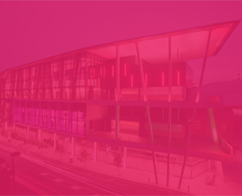
The apes are back! Planet of the Apes is one of cinema and sci-fi’s longest-lived franchises, and it’s stayed relevant since the ’60s by evolving with the times. After two reboots, two TV series, and being endlessly aped in pop culture, 2024 heralds the latest entry in the series; Kingdom of the Planet of the Apes.
Ahead of its release in cinemas today, we chatted to Production Designer Dan Dorrance, and Movement Coordinator Alain Gauthier, about how they craft the look and feel of the world, create the physicality of CG characters, and the longevity of the apes.
A Production Designer is pivotal to the filmmaking process, they oversee all the art of the film, the set builds, locations, concept art, and the aesthetics of the world. A lot of what you may love about movies, the visual style of the world, props, vehicles, set design, worldbuilding, etc. is the result of the Production Designer’s efforts.
This new film presented a unique challenge for Dorrance stylistically. He had to create a dystopian future atmosphere to an Earth where humans and apes have swapped roles, and set it apart from his previous dystopian designs, like Maze Runner. The flavour of this movie’s dystopia was heavily influenced by the time period it’s set in.
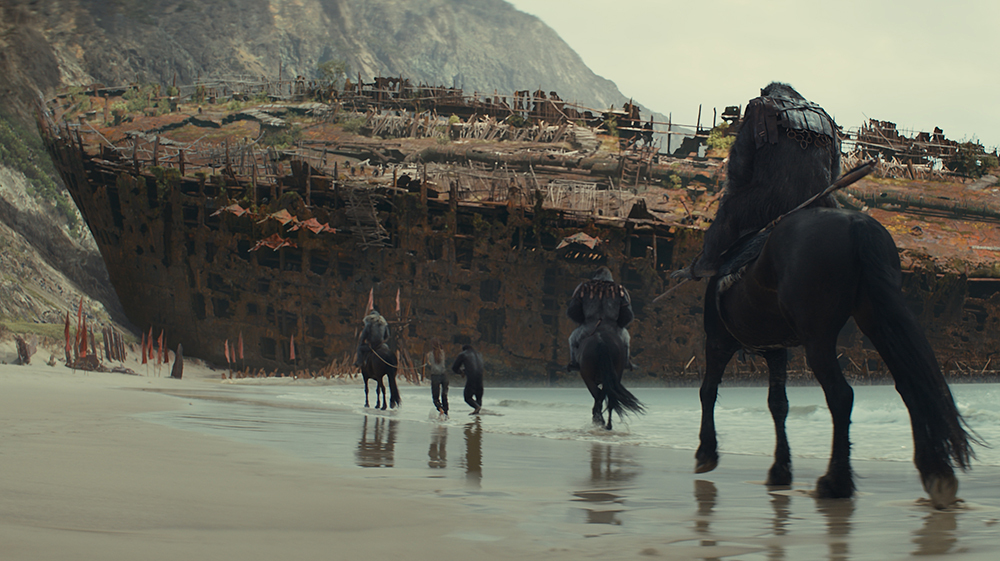 “Initially we had to decide what the period was,” he tells. “We floated 300 years from the last film, but the further you go from that period, ruins don’t become anything, they just become more ruins you don’t recognise. So we had to back up a little bit and say, ‘When is it likely that a building still stands, but be in ruins, or decrepit,’ so we decided on 75-100 years. We need people to know what they’re looking at!”
“Initially we had to decide what the period was,” he tells. “We floated 300 years from the last film, but the further you go from that period, ruins don’t become anything, they just become more ruins you don’t recognise. So we had to back up a little bit and say, ‘When is it likely that a building still stands, but be in ruins, or decrepit,’ so we decided on 75-100 years. We need people to know what they’re looking at!”
Equally vital to specific films, Kingdom of the Planet of the Apes being one of them, is the Movement Coordinator. Gauthier’s role, as a former Cirque du Soleil choreographer, dancer, theatre practitioner, and expert in physicalisation, was to help the actors properly move like their characters; apes.
“I had to prepare the actors physically, to be receptive to movement, to have body awareness, and to introduce to them the physiological and biochemical concepts of an ape,” Gauthier explains.
“After that, I have to find their characters, which involves playing the scenes with lots of improvisation, and finding their mimic, since the apes in captivity would have learned to mimic humans. We hired arm extensions for the apes too, because they’re not always bipedal, they never ran on two feet, so [the actors] had to get quadrupedal.”
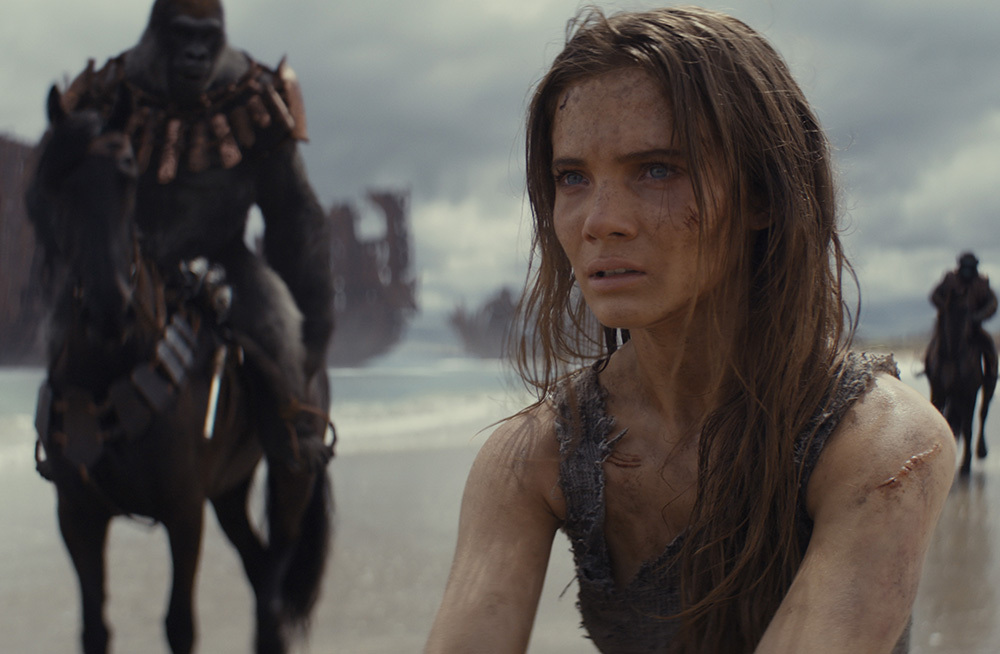 Gauthier isn’t just an expert in ape physicality though, as he also had to train 30-odd ‘feral humans’. Training humans now living on the fringe of ape society presented a unique challenge to Gauthier that he was happy to rise to.
Gauthier isn’t just an expert in ape physicality though, as he also had to train 30-odd ‘feral humans’. Training humans now living on the fringe of ape society presented a unique challenge to Gauthier that he was happy to rise to.
“That was really fun, I had no idea where to go at first, so there was lots of improv, but I took them through the journey of letting go of what is conditioned in a human being. Starting with the way you put your feet on the ground, to the way you perceive your environment, to not have a definition for everything you see, to be able to look at things in the world for what they are, not what we define them to be. Running and being afraid were important, I had to teach them to not have human reflexes, just to be completely surrendered like animals, and the only reflex is moving away from danger.”
Perhaps they’re more liberated than the apes in a way.
“And they all loved it!” Gauthier continues, “The actors really enjoyed the release, when you let go of the stress that conditioned human beings have, and take on different stresses, one that is based on observing and detecting danger.”
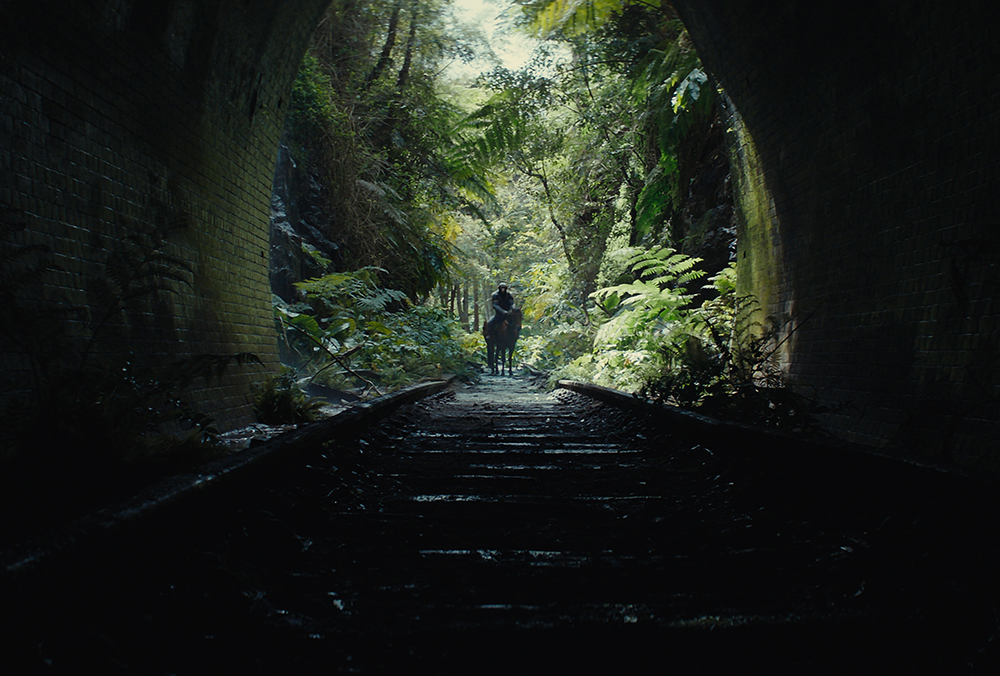
Filming in Australia also offered unique benefits to the production. Sometimes locations are dictated by the story, and sometimes a location is so good, it actually dictates the story.
As Dorrance says, “I did all this research on abandoned buildings, and as it happens you’ve got Helensburgh Tunnel, which became a key set in the movie. It’s where Noah, in the beginning of the film, goes through to enter the forbidden zone of the world.”
You can visit Helensburgh Tunnel too, it’s an abandoned railway tunnel now filled with gorgeous glowworms, just South of Sydney!
To work on such a long-lived franchise, that has changed hands so many times, is a tremendous thing for any actor or crew member. We asked Dorrance how he put his own personal stamp on this newest film.
“In the previous films, any village that they made for the apes looked quite evil, they were fortresses meant to keep people out so it makes sense, but in our movie, it wants to be inviting, someplace you wanna see and hang out in. I wanted the colour palette to be evident as well, you start with neutrals and greens, and by the end, it turns into this rusty, metal, charred world.
Dorrance is an extremely experienced Production Designer, but every new set brings a new set of challenges. For Kingdom of the Planet of the Apes, he admits that “shooting motion capture” was the biggest one he faced.
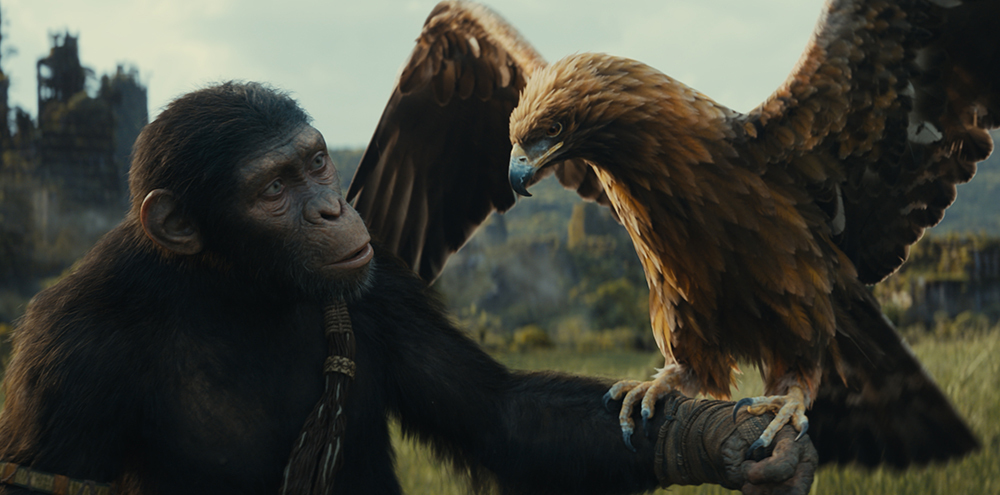 “We have this village in the film, for our Eagle Clan apes, and what I’m used to on a village set is extras. People in hut #3 chopping wood, people walking across the street with a basket, but we didn’t have any of that. We had the set pieces, the dressing, but we don’t have that element of all that happening, which is kinda what you look forward to when you shoot a movie, because you spend all this time working on a set and then it comes to life with all the characters!”
“We have this village in the film, for our Eagle Clan apes, and what I’m used to on a village set is extras. People in hut #3 chopping wood, people walking across the street with a basket, but we didn’t have any of that. We had the set pieces, the dressing, but we don’t have that element of all that happening, which is kinda what you look forward to when you shoot a movie, because you spend all this time working on a set and then it comes to life with all the characters!”
Finally, why does Dorrance think that this series is so long-lived in pop culture?
“There’s so many ways to go with it, and storylines you can follow. In this particular case, it’s the innocence of it. You can play the innocence, you can play the evil, you can do all these different things with it. It’s fascinating that we’re switching the roles of humans and apes in this movie too, we’re gonna see feral humans running around, mirroring the first movie.
And Gauthier?
“Because we’re 99.9% ape? It could be that, but also because we have an attraction to nature, and this in particular is really close to us. It’s fascinating, the reflection that great apes have on us. It’s very touching for our empathic systems and mirror neurons when you observe an ape, you’re connecting. I remember I was 7 or 8 when I saw the first Planet of the Apes movies, it was an automatic fascination for me.”
‘Kingdom of the Planet of the Apes’ is in cinemas now!








